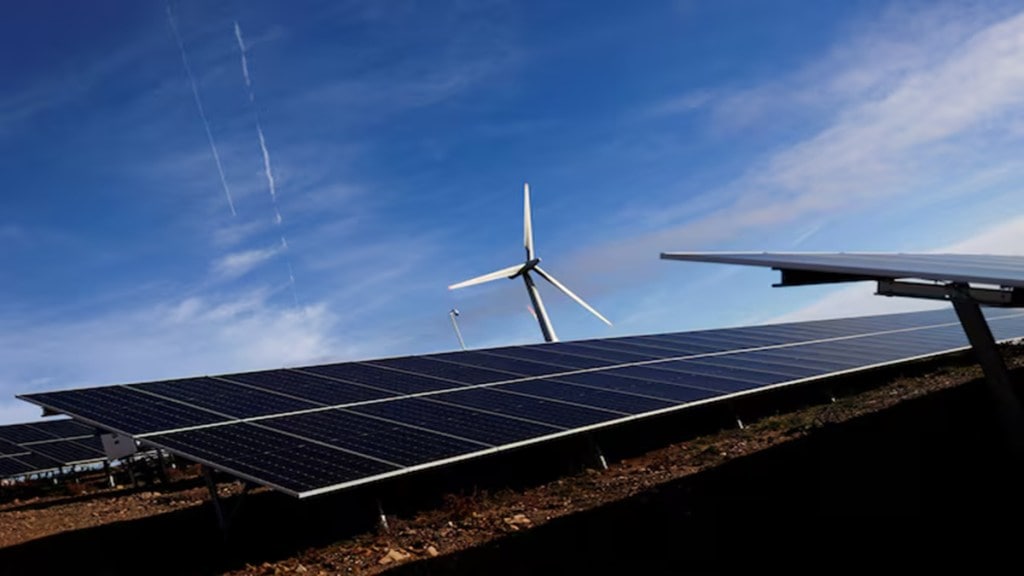By Sumant Sinha
India crossed a milestone in June—50% of its electricity generation capacity now comes from non-carbon-emitting sources, a testament to the Prime Minister’s clean growth vision. This marks a celebratory moment in India’s energy transition journey. But the transition is a long road trip requiring frequent gear shifts to adapt to changing terrain. India must now navigate rising demand, supply volatility, and evolving market dynamics to replace its fossil-fuel-based system with a clean, flexible, and inclusive energy ecosystem.
Electricity demand has surged over 20% in the last three years, and nearly doubled in the past 12 years. Peak demand now occurs in May and September, driven by heatwaves and post-monsoon industrial activity. Daily peaks have shifted too, around 3 pm and 9.30 pm, compared to 11 am and 7 pm in 2010.
With residential and commercial sectors making up 45% demand, electricity use fluctuates sharply due to weather-sensitive appliances like air conditioners (ACs) and geysers. Northern states have increased their consumption share, while western ones have declined. In sum, India is experiencing a significant rise and volatility in electricity demand, along with changes in when and where.
On the supply side, clean energy sources like solar and wind are inherently variable and time-bound. They meet 25% of afternoon demand and only 10-12% of evening demand, while on the rise. Solutions like round-the-clock renewable energy, delivered through a combination of solar, wind, hydro, and storage, are gaining ground, but more capacity is needed to meet a larger share of electricity demand.
Aligning volatile demand with variable supply across all hours and seasons at the national level is a growing challenge. While legacy coal systems provide back-up, India urgently needs clean alternatives that can ramp up or down within minutes to handle sudden surpluses or shortfalls. Equally important is the ability to manage demand flexibly, reducing or shifting consumption when needed—such as during sudden drops in supply due to unexpected weather or spikes in air conditioning use.
The largest buyers of electricity, electricity distribution companies (discoms), also increasingly require flexibility to benefit from falling prices and meet shifting consumer needs. They are growing reluctant to sign the 25-year power purchase contracts.
Spot markets, which handle around 10% of India’s electricity, offer agility but are highly volatile. Prices can drop to near zero during solar hours and spike to `10/unit in the evening. Regulatory constraints that cap consumer tariffs discourage discoms from engaging in these risk-prone markets, despite their potential for dynamic and significantly higher procurement.
This need for flexibility is driving the entry of India’s electricity markets into a quick-commerce era, where minute-level responsiveness is becoming the premium. The traditional model—that of long-term power purchase agreements (PPAs)—is under strain, but has its benefits and is likely to retain a sizeable share of the market.
The transition has so far relied on mandates for discoms and select large industries, but this is no longer sustainable, especially as discoms hesitate. India’s emission profile is also shifting. Industry now accounts for 38% of energy use and 40% of emissions, while households contribute to 35% of electricity demand growth. The rising use of ACs alone could add 120-140 gigawatt to peak demand by 2030—more than the UK’s total demand.
There’s a tactical need to unlock and diversify clean energy demand, and a moral imperative to place the onus for climate action on more people and organisations. Recognising these trends, the government has introduced several bold frameworks recently.
Greenhouse gas emission targets
These benchmarks of placing a cap on emissions per unit of output (similar to China and Korea) apply to 282 plants across four high-emitting sectors accounting for 15-20% of India’s electricity use—aluminium, cement, chlor-alkali, and pulp and paper. The targets are annual and mandatory, enabling carbon pricing to influence business decisions and internal rate of return calculations. Given that these targets are moderately more ambitious than existing ones on large industries like the perform, achieve, and trade scheme and renewable consumption obligations, and that are likely to be expanded to other sectors, this could boost demand for clean energy and energy efficiency.
Virtual PPAs (VPPAs)
VPPAs offer price certainty without long-term lock-ins, attributes that discoms and industries seek. In this financial contract, a buyer and renewable generator agree on a strike price. The generator sells power in the spot market, and payments are exchanged based on price differences. Buyers receive renewable energy certificates at predictable costs, while generators gain stable revenue streams—unlocking capital for clean energy projects.
India Energy Stack
Inspired by the success of India Stack (which powers Aadhaar, United Payments Interface, and DigiLocker), the India Energy Stack aims to digitally connect generators, discoms, regulators, consumers, and innovators. It will enable real-time data-sharing and visibility of distributed assets like rooftop solar and batteries. If we place the onus of climate action on a larger populace, the India Energy Stack could give them a tool—to sell clean energy directly to other households instead of via utilities and benefit from participating in demand-side flexibility initiatives. This could transform consumers into active participants, choosing when and how to use or trade electricity.
India now stands on the cusp of a new phase in its energy transition—from static to dynamic demand and supply, from rigid contracts to agile markets, and from centralised control to digital and distributed participation. We have made a good start to be ready for what’s coming. With a few more bold policy shifts, especially on enabling supply, and demand flexibility and digital innovation paving the way, we are surely in for an exciting journey—full of challenges, creativity, and many more transformative milestones.
The writer is founder, chairman and CEO, ReNew.
Disclaimer: Views expressed are personal and do not reflect the official position or policy of FinancialExpress.com. Reproducing this content without permission is prohibited.

